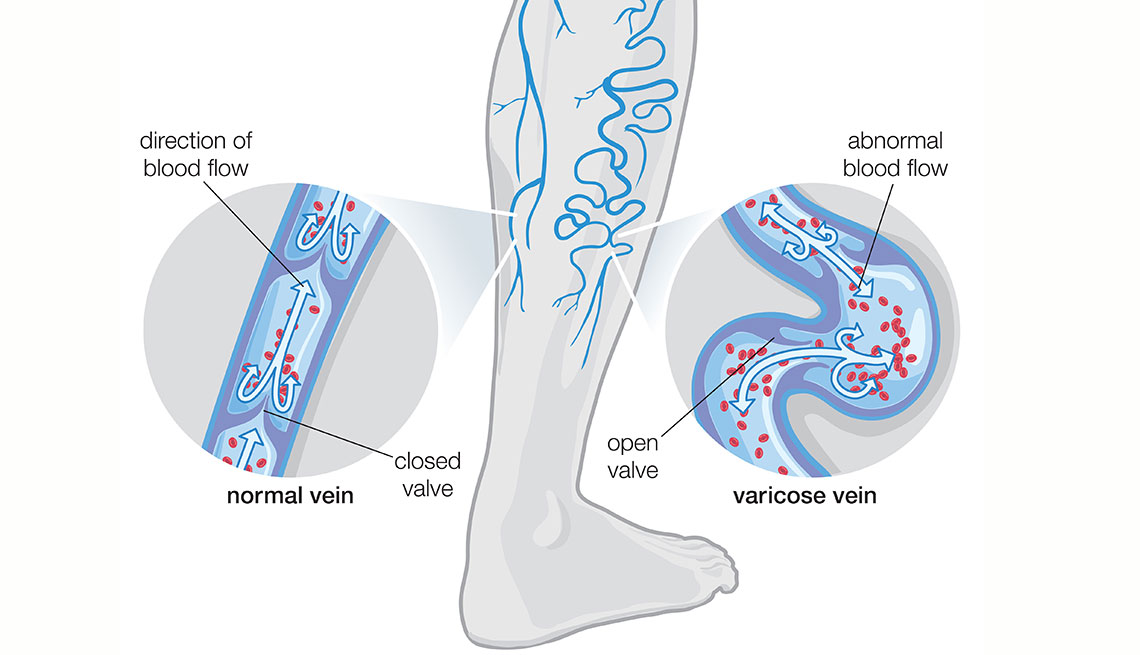Staying Fit
Varicose veins are often thought of as a cosmetic problem that may cause discomfort, not a serious medical issue for most people. But a study on older adults has found that people with varicose veins are five times as likely to develop deep venous thrombosis (DVT).
"Varicose veins are rarely associated with serious health risks. In contrast, [DVT], pulmonary embolism (PE), and peripheral artery disease (PAD) are vascular diseases that are associated with serious systemic effects. Patients with varicose veins have increased levels of inflammatory and prothrombotic markers," the authors said. The study, conducted in Taiwan, was published by JAMA.


AARP Membership— $12 for your first year when you sign up for Automatic Renewal
Get instant access to members-only products and hundreds of discounts, a free second membership, and a subscription to AARP the Magazine.
Varicose veins occur when veins become enlarged, dilated and overfilled with blood. The veins typically appear swollen and raised, and they have a bluish-purple or bluish color and can be painful. Causes can include hormonal changes, such as menopause, being over age 50, obesity and a family history. The more serious DVT occurs when a blood clot forms in a vein located deep inside the body, typically the thigh or lower leg, but it can also develop in other areas and can contribute to a life-threatening PE.
The researchers analyzed insurance claims data from 212,984 adult patients with varicose veins who had an average age of 54.5 years, and compared that to data from 212,984 patients without varicose veins with an average age of 54.3 years. The data were from Taiwan's National Health Insurance program. Over a research span of 13 years, with follow-up at seven-year intervals, patients with varicose veins had a higher incidence of DVT, at 6.55 per 1,000 versus 1.23 in the control group, Medscape reports. PE incidence and PAD incidence was also elevated in the varicose vein group versus the control group.
The study was observational and did not include information on patients who did not seek medical care, which limits its overall findings. "Whether the association between varicose veins and DVT is causal or represents a common set of risk factors requires further research," the authors concluded.
Still, it can be important to discuss any concerns you have about varicose veins with your doctor, who might recommend lifestyle changes such as avoiding standing for extended periods of time, losing weight, exercising, elevating your legs while sleeping and using compression socks. Other medical interventions, including surgery, are also available.
































































